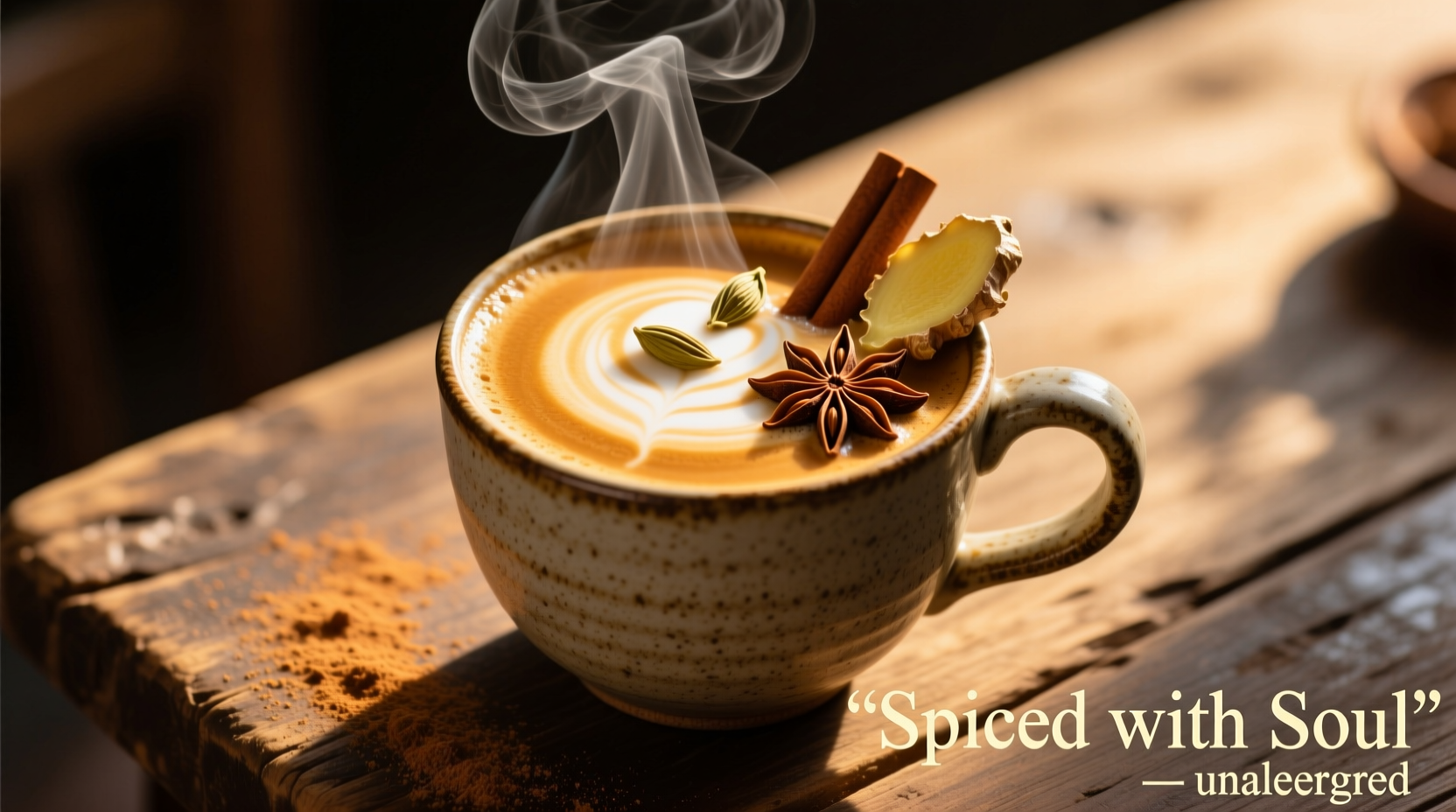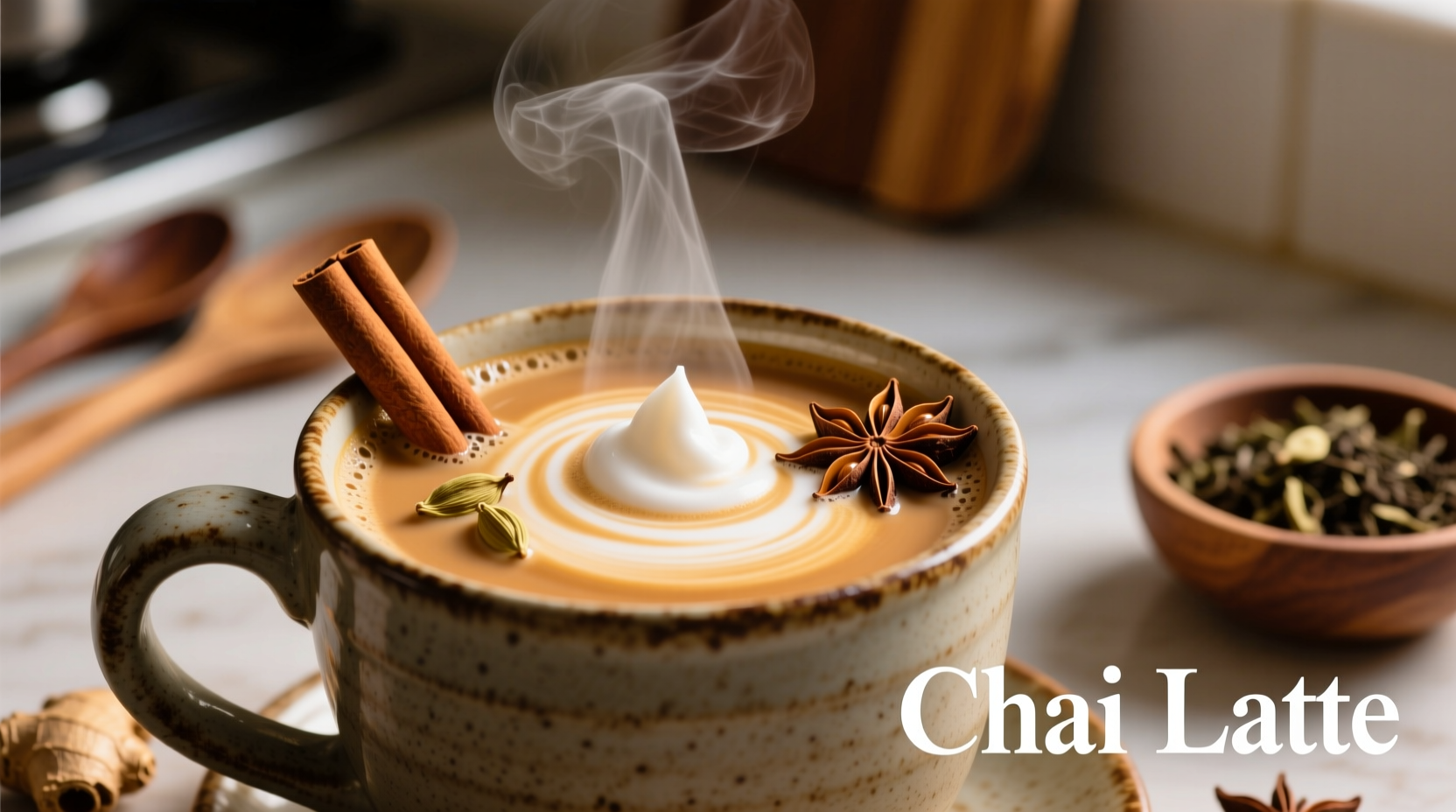Ever wondered what makes chai latte so uniquely comforting? Whether you're considering your first sip at a coffee shop or curious about authentic masala chai, understanding its precise flavor profile helps set accurate expectations. This comprehensive guide breaks down exactly what to anticipate when you take that first sip of this globally beloved beverage.
The Essential Flavor Components of Chai Latte
Chai latte combines several distinct flavor elements that work in harmony. Unlike plain tea or coffee, it offers a multi-dimensional taste experience that evolves from the first sip to the aftertaste. The authentic Indian preparation—known as masala chai—differs significantly from the sweeter, spice-light versions commonly served in Western coffee chains.
Breaking Down the Spice Symphony
What does chai latte taste like? The answer lies in its signature spice blend. Traditional masala chai incorporates at least four core spices, each contributing distinctive flavor notes that create chai's characteristic warmth:
| Spice | Flavor Contribution | Chemical Compound |
|---|---|---|
| Cardamom | Citrusy, floral, slightly sweet | 1,8-cineole |
| Ginger | Sharp, pungent warmth with slight heat | Gingerols |
| Cinnamon | Warm, sweet, woody notes | Cinnamaldehyde |
| Cloves | Intense, slightly bitter warmth | Eugenol |
This scientific breakdown from the USDA Agricultural Research Service explains why chai creates such a complex sensory experience—the chemical compounds in these spices interact with your taste receptors differently than single-note beverages.
Traditional Masala Chai vs. Western Chai Lattes
Understanding what chai latte tastes like requires recognizing the significant differences between authentic Indian preparation and commercial adaptations:
- Authentic Masala Chai: Strong black tea (usually Assam) brewed with fresh spices, milk, and sugar directly in the pot. Features pronounced spice heat, robust tea flavor, and balanced sweetness. The ginger provides noticeable warmth that builds with each sip.
- Western Coffee Shop Versions: Often made from pre-mixed syrups or powders with dominant sweetness, muted spice notes, and less tea presence. Many commercial versions emphasize cinnamon while minimizing ginger and black pepper notes.
Food historians document chai's evolution from a British colonial adaptation of Indian spiced tea to its current global popularity. According to culinary research from Encyclopædia Britannica, chai's journey began when the British introduced tea plantations to India in the 19th century, but Indians transformed it with local spices, creating the masala chai we recognize today.
How Preparation Affects Flavor Perception
Several factors dramatically influence what chai latte tastes like in your cup:
Milk Type Variations
Traditional Indian chai uses full-fat dairy milk, which creates a rich mouthfeel that balances the spice intensity. Plant-based alternatives change the flavor profile significantly:
- Oat milk: Adds natural sweetness that complements spices
- Almond milk: Creates a lighter texture with subtle nuttiness
- Coconut milk: Introduces tropical notes that can overpower delicate spices
Brewing Method Impact
The most authentic chai experience comes from simmering tea leaves and whole spices together—a method that extracts maximum flavor compounds. Quick-brewed versions using pre-made syrups lack the depth and complexity of traditionally prepared chai.

Sensory Experience Beyond Basic Taste
What does chai latte taste like? It engages multiple senses beyond just taste:
- Aroma: The first impression comes from its complex fragrance—sweet cardamom, warm cinnamon, and earthy ginger create an inviting scent profile before the first sip
- Mouthfeel: Properly made chai has a creamy, slightly viscous texture from the milk proteins interacting with tea tannins
- Temperature Effect: Chai tastes significantly different when served hot versus iced—heat amplifies spice notes while cold versions emphasize sweetness
- Aftertaste: Authentic masala chai leaves a pleasant warming sensation that lingers, particularly from the ginger and black pepper components
When Chai Latte Might Not Suit Your Palate
While many enjoy chai latte's distinctive flavor, certain preferences might make it less appealing. According to sensory analysis studies from ScienceDirect, people with heightened sensitivity to capsaicin (the compound that makes peppers hot) often perceive the ginger in chai as uncomfortably spicy. Those preferring very mild flavors might find traditional masala chai too intense, while coffee enthusiasts sometimes miss the roasted notes they expect in lattes.
How Chai Latte Compares to Similar Beverages
Understanding chai latte's unique position among popular warm beverages helps set accurate expectations:
- vs. Coffee Latte: Chai offers complex spice notes instead of coffee's roasted bitterness, with natural sweetness reducing the need for added sugar
- vs. Matcha Latte: Chai provides warming spices while matcha delivers grassy, vegetal notes with subtle bitterness
- vs. Hot Chocolate: Chai has tea-based astringency and spice heat rather than chocolate's rich sweetness
What First-Time Drinkers Should Expect
If you're trying chai latte for the first time, here's what to anticipate:
- The initial sip delivers noticeable spice warmth, particularly if ordering authentic masala chai
- Unlike coffee, chai's caffeine content is milder and comes with L-theanine from the tea, creating a calmer energy boost
- Commercial versions at major coffee chains typically taste significantly sweeter and less spicy than traditional preparations
- Asking for "less sweet" or "traditional preparation" can help you experience more authentic flavor notes
For the most accurate representation of what chai latte tastes like, seek out establishments that prepare chai from whole spices rather than using pre-made syrups. The difference in complexity and balance is substantial.











 浙公网安备
33010002000092号
浙公网安备
33010002000092号 浙B2-20120091-4
浙B2-20120091-4